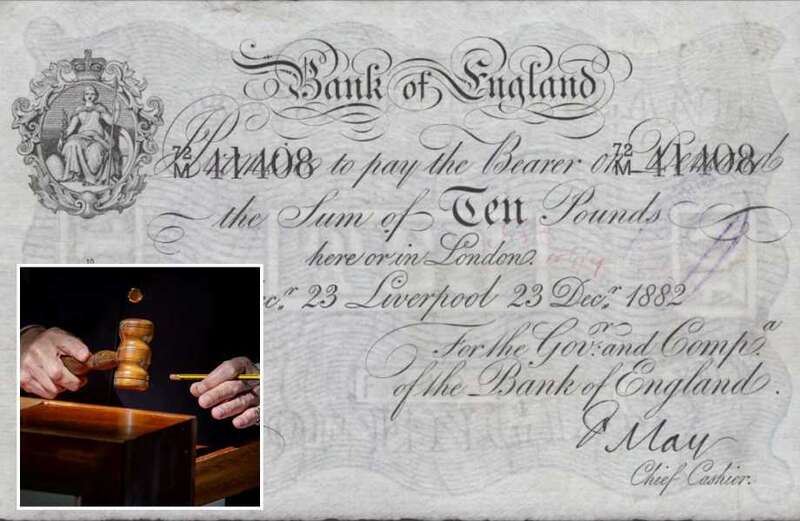A RARE £100 note has sold for 320 times its value because of an ultra rare squiggle that's easy to ignore.
A remarkable rare £100 banknote dating back to 1855 has sold for a whopping £32,000 at auction.


The 169-year-old piece of paper currency is one of the highest denominations to be signed by Matthew Marshall, the ex-chief cashier of the Bank of England.
And the note - not in circulation in the UK since the 19th century - was considered so expensive when it was issued that it was cut in half and sent separately before being stuck back together for security reasons.
Experts at auction house Noonans Mayfair, where the money sold yesterday (26th June), said £100 in 1855 would be worth around £15,000 today.
 Schools at risk of closing as teachers prepare to vote on joining strike chaos
Schools at risk of closing as teachers prepare to vote on joining strike chaos
But one collector was so keen on owning the currency - issued from the Bank of England's Liverpool branch - that they paid more than double that figure for it.
Andrew Pattison, head of the banknotes department at Noonans, said: "This remarkable note is of the highest quality and is dated from 26 January 1855, making it almost 170 years old.
"It is signed by Matthew Marshall who was Chief Cashier of the Bank of England between 1835 to 1864 and is one the highest denominations that he signed.
"The note has been cut in half and then taped back together.
"This is because £100 was so much money (around £15,000 today) that the two halves of the note were posted separately for security, and then put back together later on so the note could still be used."
Another rare £10 note from Liverpool, issued on December 23, 1882, and signed by the later disgraced chief cashier Frank May, sold for a hammer price of £26,000.
While a £1,000 specimen note, signed by Ernest M. Harvey, dating from 1922, sold for a hammer price of £28,000.
Mr Pattison added: "All three of these were bought by pre-eminent collectors of British banknotes.
"All three comfortably exceeded their estimates because the market for such rare items is going from strength to strength.
"Newly published information regarding the minuscule surviving quantities of such banknotes (many are unique survivors) is giving bidders a well-founded sense of security when spending larger amounts.
 Guardiola picks side on BODY LANGUAGE as he tells Foden why he’s been on bench
Guardiola picks side on BODY LANGUAGE as he tells Foden why he’s been on bench
"Additionally, these notes come up for auction so infrequently, if ever, that bidders are clearly concluding that they need to take the chance when offered, as they may never see another."
It's not just notes you need to keep an eye on, coin collecting has become a popular hobby, with many people selling their rare finds online.
How to Sell Rare and Valuable Coins
There are two primary methods to sell rare coins- eBay and auctions.
Selling on eBay requires caution, as sellers must set a minimum price at least equal to the coin's face value.
Be aware that buyers may not always follow through on their bids despite eBay's terms stating otherwise.
For higher-value items, eBay advises sellers to approve bidders beforehand, although this doesn’t guarantee payment.
Alternatively, selling at auction involves contacting a member of the British Numismatic Trade Association, who can assess the coin’s value and help determine its worth to collectors, typically for a fee or a percentage of the sale.
This process usually requires an in-person visit for assessment.
Meanwhile, it turns out checking for a tiny smudge on the back of your £20 notes could land you huge profits.
Elsewhere, as new bank notes featuring King Charles III's face begin to roll in, we reveal which exact detail to look out for after one sold for £11,000.


































